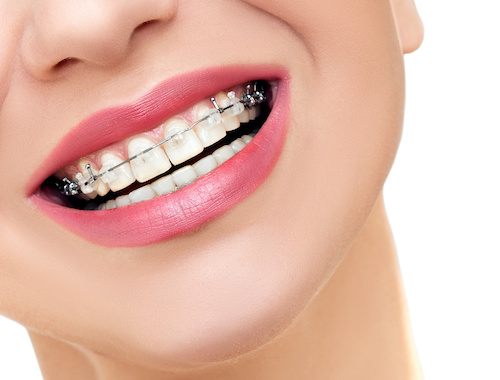Over 4 million people in the United States have braces, many of them teenagers. But when it comes to your child, who may be much younger, you might be thinking, when is the best time to start orthodontics?
While orthodontic treatment varies widely among children, there are some ages at which parents need to have their child’s teeth evaluated.
In this article, you’ll learn more about orthodontics for kids, why they’re important, and what age is best to start treatment.
What is Orthodontics?
The dental field of orthodontics focuses primarily on the alignment of the teeth, jaw, and bite, not only for cosmetic purposes but for functionality. Orthodontics is a specialty field and requires more study, knowledge, and certification. The doctors that study orthodontics are called orthodontists.
Orthodontists see anyone – adult or child – who wishes to have cosmetic work done to their teeth and jaw. They fix crooked teeth, misaligned jaws, craniofacial issues, and more.
Types of Orthodontic Treatments
Orthodontists use a variety of treatments to create straight teeth. Here is a list of several treatments that may be used.
- Braces, such as traditional metal wires and braces
- Clear braces such as Invisalign or plastic aligners
- Elastics
- Appliances
- Retainers
The type of orthodontic treatment you need will depend on what your needs are and the best approach to fixing them.
When Your Child Should See an Orthodontist
So, when should your child see an orthodontist? The answer isn’t always so simple.
Many parents start considering braces for their children around ages 12-13. At this age, there is still a lot of growth, so it’s a prime time to be making adjustments to the teeth and jaw.
However, sometimes there are significant orthodontic problems that need to be addressed by an orthodontist at an earlier age, sometimes before the age of 10. Early intervention is key to fixing any problems that might arise and cause larger issues later in life.
The best way to know if your child needs an orthodontic appointment is by continuing regular dental appointments with your child’s dentist. By maintaining dental health and appointments, your pediatric dentist can point out possible problem areas with your child’s jaw structure and teeth. They can also recommend an orthodontist that can help your child.
Here are some possible problems that may need orthodontic assistance.
- Crowded teeth
- Thumb sucking or sucking on other objects continuously
- Jaw misalignment
- Teeth that stick out too far
- Teeth or jaw grinding
- Chewing and biting problems
- Mouth breathing
- Losing baby teeth too fast or too many at a time
- Overbite or underbite
- Any pain in the jaw or face
- Damaged teeth by trauma or injury
- Sleep disorder
Again, early intervention will save you time and money! By catching problems at a younger age, you will avoid the risk of a jaw disorder or other medical issues.
When Should Your Child Get Braces?
The decision to get braces is up to the parent, caregiver, and orthodontist. To see if your child is ready for braces, the orthodontist will do an evaluation. if the child is ready for braces, the orthodontist will set up a treatment plan and review it with you, the caregiver.
There may be times when children are not ready for braces and this is ok. The orthodontist may explain that they still have teeth that need to come in or wait for more growth in their mouth.
Most kids will have braces for a couple of years, but a typical time frame is 18-24 months depending on the case. They’ll also have appointments every 4-6 weeks the check on their progress and make adjustments as necessary, which may be quite painful for a few days. Once their treatment with braces is complete, they usually wear a retainer to keep the teeth in place and ensure no shifting takes place.
What is A Typical Orthodontist Visit Like?
If you’ve scheduled an orthodontist appointment for your child, you might be wondering what to expect. Here are a few things to prepare for.
Since you’re a new patient (most likely!) you’ll have to fill out some paperwork regarding your child’s case. This is so the orthodontist will know why you’re here and what your goals may be.
The orthodontist will then take a look at your child’s teeth and jaw, looking for things like jaw alignment, crooked teeth or teeth that grow abnormally, their bite, or damaged teeth.
Generally speaking, the first orthodontic visit is a consultation to determine if treatment is needed at that time. If the orthodontist believes that treatment is the next step, they’ll create a treatment plan which they’ll review with you before you agree to anything. Once you agree (or not!) you’ll move forward with treatment.
Depending on your child’s case, they may suggest moving forward in phases such as multi-phase, two-phase, or single-phase treatments. This means that other problems need to be addressed and correct in multi- or two-phases before you move forward with braces. For some, heading straight to braces is perfectly normal and saves the patient time and cost.
Other times, the child may not be ready for any treatment or braces. The orthodontist will explain why and when to return.
Braces For Your Child
The field of orthodontics is advanced and there are several treatments that will work well for your child’s oral health. Seeing an orthodontist gives your child the best chance to have not only straight teeth but a well-functioning jaw and mouth for the rest of their life.
Do you need help finding an orthodontist? Our team is confident and compassionate in our dental practice. Contact us today to schedule your appointment or to learn more!
